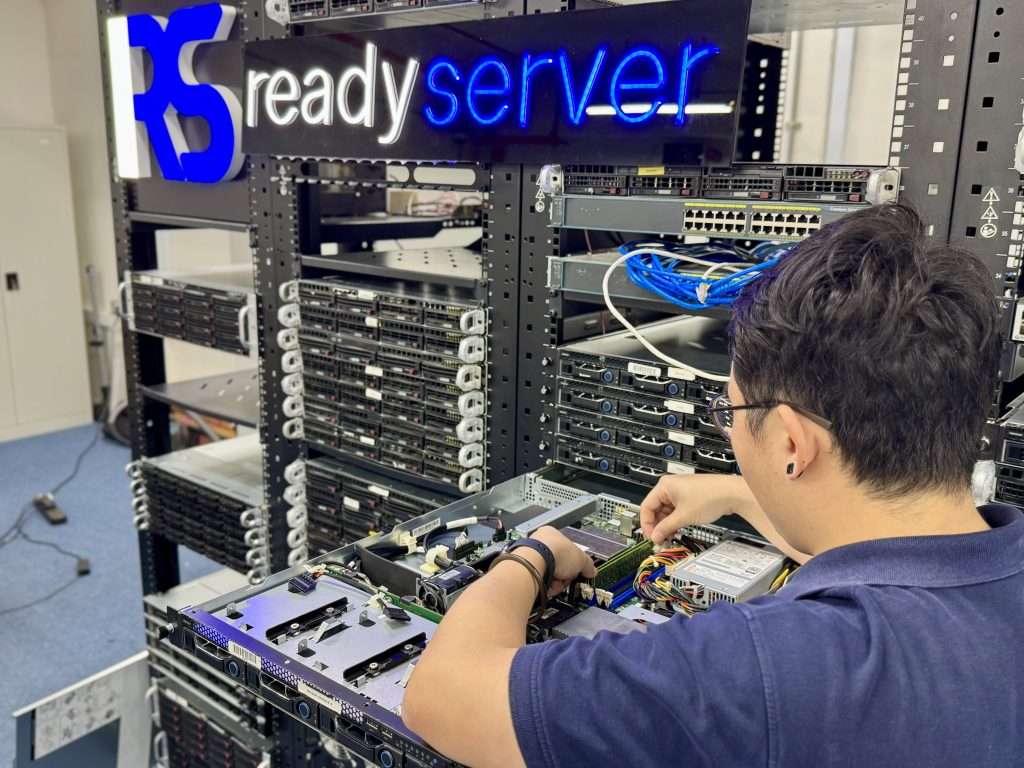Why DDoS Protection Matters
Distributed Denial of Service (DDoS) attacks are the digital equivalent of a traffic jam—thousands of fake cars flood the road so real drivers can’t move. For websites, that means slowdowns, timeouts, and lost revenue. Hosting providers stand between you and this chaos, using layered defences, global networks, and well-rehearsed incident playbooks to protect against DDoS attacks. In this guide, I’ll break down how those protections work—and what you should expect from a secure host.
What this guide covers
We’ll explain the attack types, how providers detect and filter malicious traffic, and the practical tools used at network and application layers. You’ll also get a checklist for choosing a provider and simple steps you can take yourself.
Who should read this
Founders, marketers, developers, and anyone responsible for uptime, performance, or customer trust.
What Is a DDoS Attack?
A DDoS attack uses many devices (often a botnet) to overload a target with more traffic or requests than it can handle. Not all DDoS attacks look the same—some are blunt floods, others are subtle and surgical.
Volumetric attacks (flooding bandwidth)
Think massive waves of UDP/TCP packets designed to saturate your internet link. If your pipe is full, nothing legit gets through.
Protocol attacks (breaking network plumbing)
These pick on weaknesses in network protocols or how devices like firewalls and load balancers manage connections. Examples include SYN floods or fragmented packets crafted to exhaust resources.
Application-layer attacks (overworking your app)
Here, attackers mimic “real users” hitting expensive endpoints (like search or checkout) to drain CPU and database capacity. They’re quieter, harder to spot, and often more disruptive for smaller sites.
Real-world example in simple terms
Imagine your café hires one barista for steady flow. An attacker sends 500 “customers” all ordering the most complicated drink at once. Your barista is swamped, genuine customers walk out, and reviews suffer. That’s L7 in a nutshell.
How Hosting Providers Detect Attacks Early
Early detection is everything. Providers keep eyes on the network 24/7 and know what “normal” looks like for regions, ports, and protocols.
Always-on monitoring and anomaly baselines
Traffic baselines help spot weird spikes: sudden surges on port 80/443, unusual countries, or bursty packet rates.
Telemetry: NetFlow/sFlow, packet samples, logs
Flow records and sampled packets provide a quick fingerprint of an attack—source ranges, packet sizes, flags, request paths—so filters can be applied fast.
Threat intelligence feeds and signatures
Providers ingest IP and botnet intel to pre-emptively block known bad actors and popular attack kits.
The Layered DDoS Defence Stack
No single control does it all. Good providers stack multiple defences so if one layer misses, the next catches.
Edge filtering and scrubbing centres
Traffic is steered to big “car washes” (scrubbing centres) where bad packets are stripped and clean traffic returns to your site.
Anycast networks and global load distribution
Anycast advertises the same IP from many locations so traffic flows to the nearest edge. Attacks get spread thin instead of smashing a single point.
Rate limiting and connection tracking
Providers cap per-IP or per-ASN request rates and watch for suspicious connection patterns (half-open TCP handshakes, rapid resets, etc.).
Web Application Firewalls (WAF) for Layer 7
A WAF inspects HTTP requests for malicious payloads, odd headers, and attack signatures, blocking what shouldn’t pass.
Bot challenges (CAPTCHA/JS) and human verification
Suspicious clients get challenged—legitimate humans breeze through; headless bots stumble.
Traffic Diversion & Scrubbing in Practice
When a bigger surge lands, providers re-route your traffic for heavy-duty cleaning.
BGP diversion vs remote blackholing (RTBH)
With BGP diversion, traffic takes a detour to a scrubbing centre. With RTBH, traffic is dropped upstream to protect the network during emergencies. It’s a last resort to stop a meltdown.
“Clean pipes” and return via GRE/IPsec
After cleaning, good traffic is tunneled back to your host via GRE or IPsec so your origin sees only the legitimate flows.
FlowSpec for rapid rule pushes
BGP FlowSpec lets providers rapidly push fine-grained filters (e.g., “block UDP 123 from these prefixes”) across the backbone.
Absorbing the Blow: Scale as a Shield
Sometimes the best defence is being too big to knock over.
Over-provisioned bandwidth and burst capacity
Providers intentionally keep headroom and can burst to absorb short spikes while filters kick in.
CDN caching and origin shielding
Putting a CDN in front of your site serves cached assets at the edge and hides your origin. Attackers hit the edge, not your server.
Auto-scaling for application spikes
For dynamic content, auto-scaling adds more app instances when requests climb—great for L7 resilience.
Filtering Tactics and Protocol Hardening
Providers also harden the nuts and bolts of transport.
Access Control Lists (ACLs) and reputation lists
Network ACLs block obviously malicious ports/protocols and cut off sources with poor reputations.
Behavioural/ML-based detection
Machine-learning models look for anomalies in request patterns, user agents, and paths to flag new attack styles quickly.
SYN cookies, UDP rate shaping, HTTP/2 protections
SYN cookies validate TCP handshakes without wasting resources, UDP is shaped to stop floods, and HTTP/2-specific mitigations throttle rapid-reset and stream-abuse patterns.
Application-Layer (L7) Protections
Layer 7 attacks feel like “real traffic”, so precision matters.
Per-endpoint rate limits and WAF rules
You can rate-limit login, search, or checkout endpoints separately. WAF rules block excessive requests, odd payloads, and known exploit patterns.
TLS termination and handshake offload
Edge termination absorbs expensive TLS handshakes so your origin doesn’t crumble during spikes.
Challenges for headless bots and bad automation
JavaScript challenges, device fingerprinting, and behavioural scoring help separate humans from scripts.
Hosting Type: How Protection Differs
Different plans, different responsibilities.
Shared hosting
Protection is standardised at the platform edge. You get safety in numbers, but limited custom tuning.
VPS and cloud servers
You’ll often get provider-level filtering plus tools to configure your own firewall and rate limits. Great balance of control and protection.
Dedicated/bare-metal
You gain full control, but also more responsibility. Managed add-ons (scrubbing, WAF, CDN) are highly recommended.
Managed vs unmanaged responsibilities
Managed plans include monitoring, diversion, and hands-on mitigation. Unmanaged means you must act fast yourself or rely on a separate DDoS service.
Incident Response: What Happens During an Attack
When the storm hits, the process beats panic.
Runbooks, status pages, and comms
Providers follow runbooks: detect → classify → divert → scrub → restore. Customers get timely updates via status pages and email.
Forensics, post-mortems, and tuning
Afterwards, logs are analysed, rules refined, and long-term fixes (e.g., new WAF policies) are implemented.
What to Look For in a DDoS-Protected Host
Here’s your practical checklist.
Key features and questions to ask
- Do you provide always-on detection and automated mitigation?
- Do you use Anycast and multiple scrubbing centres?
- Can I set per-endpoint rate limits and custom WAF rules?
- How do you protect against HTTP/2 and L7 bot attacks?
- Is origin shielding or a CDN included?
SLAs, transparency, and compliance
Look for clear SLAs (mitigation time, uptime), public status pages, and certifications (e.g., ISO 27001). Transparent post-incident reports are a green flag.
Cost vs Protection: Picking the Right Tier
You don’t need a sledgehammer for a thumbtack—but you do need the right tool.
Included vs add-on protection
Entry plans may include basic volumetric protection; advanced L7 rules, bot management, and custom dashboards are often add-ons.
When to add a specialist DDoS provider
If you run high-stakes apps (payments, gaming, APIs) or suffer targeted campaigns, pairing your host with a specialist DDoS provider gives you deeper visibility and faster, tailored responses.
Best Practices You Control
Even the best host can’t save an unprepared origin.
Harden the origin, cache aggressively
Hide origin IPs behind a CDN, lock down direct access to known IPs, and enable aggressive caching for static assets.
API rate limits, DNS resilience, backups
Set per-token/API rate limits, use redundant DNS with health checks, keep offsite backups, and rehearse restoration. Have an incident contact sheet ready.
Conclusion
DDoS defence isn’t one magic box—it’s layers working together: smart detection, big pipes, scrubbing at the edge, precise L7 controls, and a calm incident process. A capable hosting provider will blend all of this behind the scenes so your users barely notice a wobble. Your job is to pick a host that’s transparent about its protections, choose the right tier for your risk, and add sensible best practices like caching, rate limits, and origin shielding. Get those pieces in place and a DDoS becomes a speed bump, not a roadblock.





